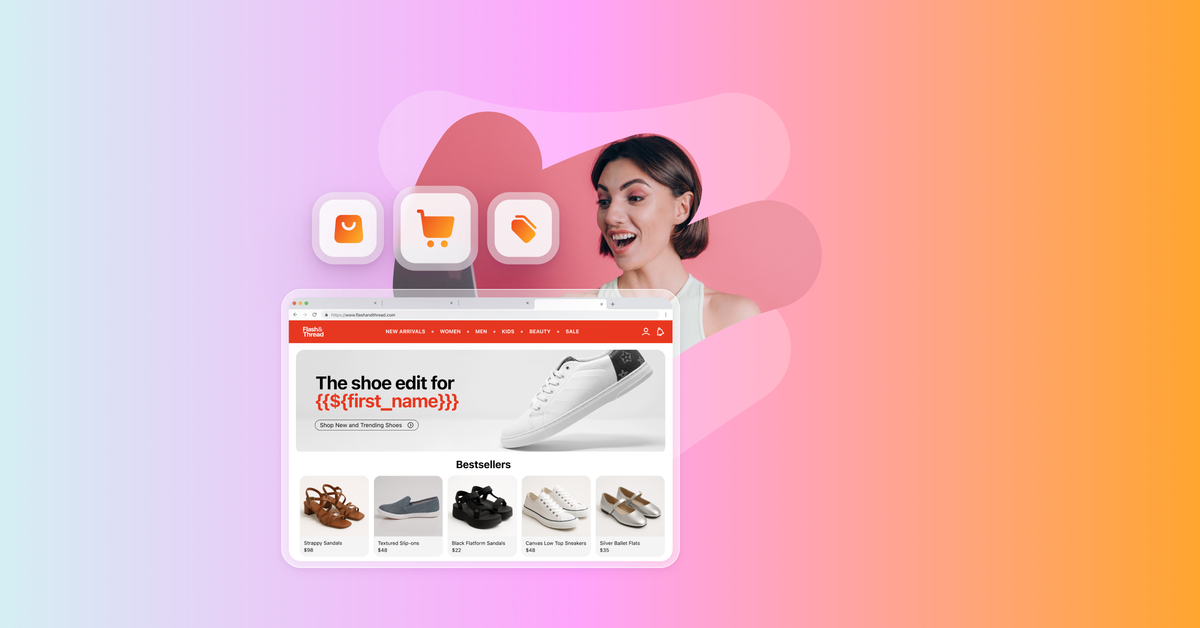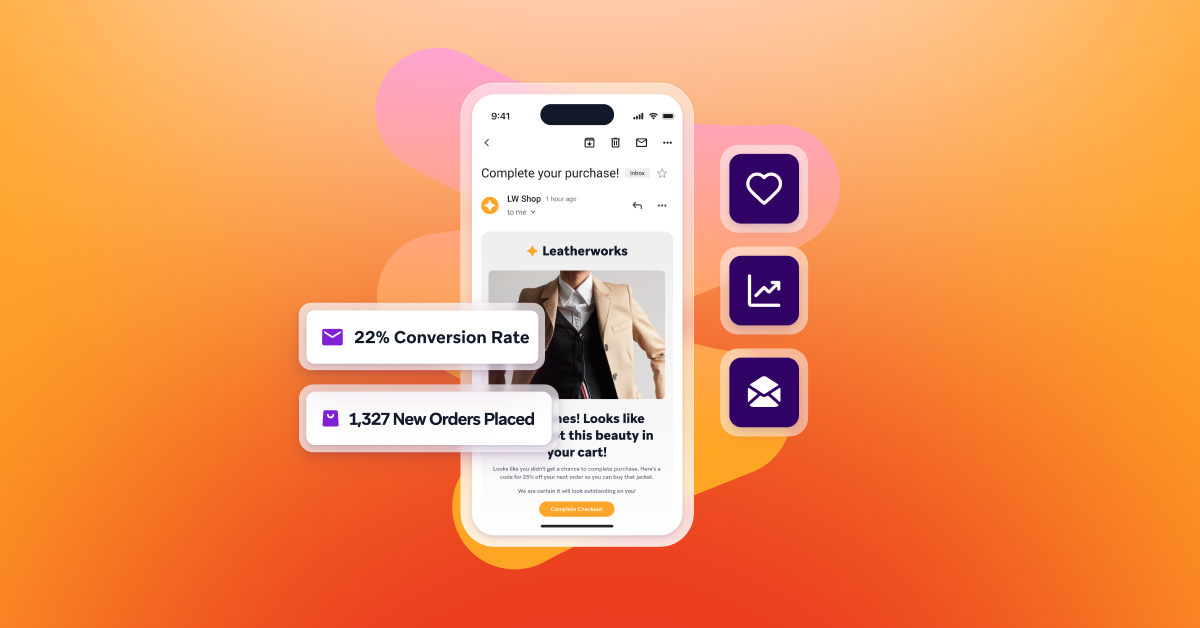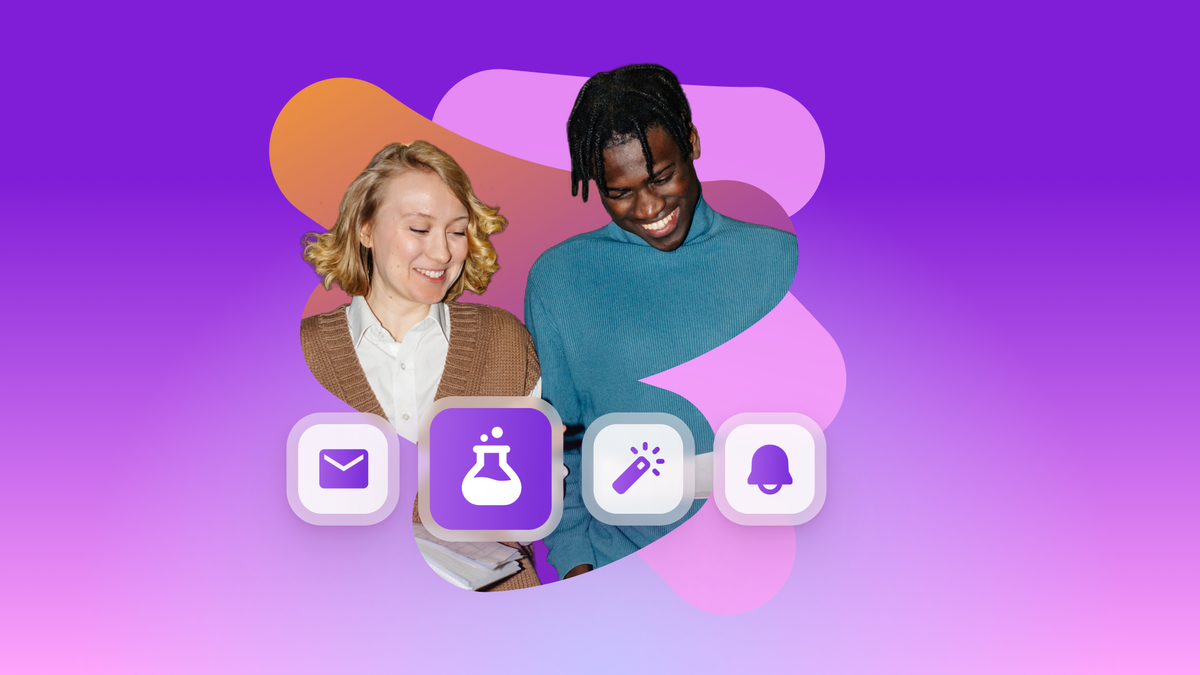What’s Rate Limiting?
Published on October 19, 2020/Last edited on October 19, 2020/3 min read
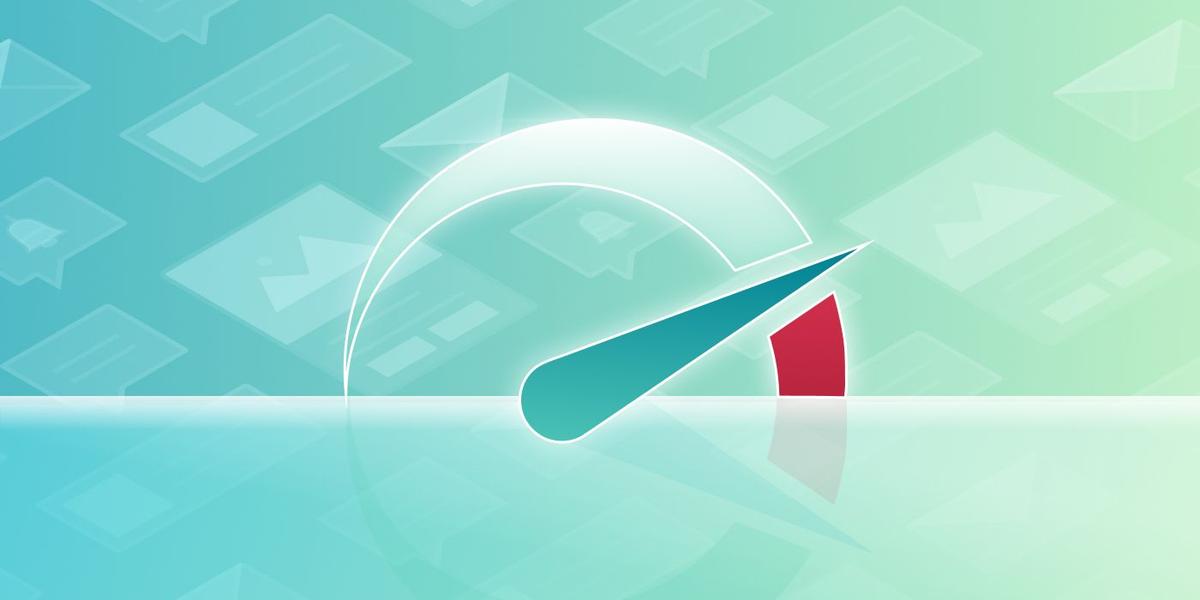

Mary Kearl
WriterYou've worked to put together a fantastic campaign, it sends—and then your company's app crashes. Your website won't load. Customers can't log into their accounts. They can add items to their cart, but the transactions won't process. Nothing is working like it's supposed to. You've put a tantalizing offer together, you've just released pre-sale tickets for the event of the year, the finale of this year's hottest show is ready to stream, your latest app or website content has gone viral, but only some people are able to get in on the action.
For your customers, like getting invited to an exclusive party with a bunch of friends, with only a select few making it inside the front door.
And all of these worst-case scenarios are exactly the kind of thing that rate limiting was designed to prevent.
Rate Limiting 101
Yes, there can be "too much of a good thing" in the world of marketing and it is, in fact, possible to be "too successful" at customer engagement. That is, when you have a wildly popular promotion, viral campaign, breaking news story, or exclusive piece of content, sending even just one email, text, or push notification campaign about it to a large group of subscribers—all at once—could create enough traffic to crash your app or website.
That's why many brands set message rate limits, to stagger how many campaigns get sent at once, to avoid overwhelming their servers.
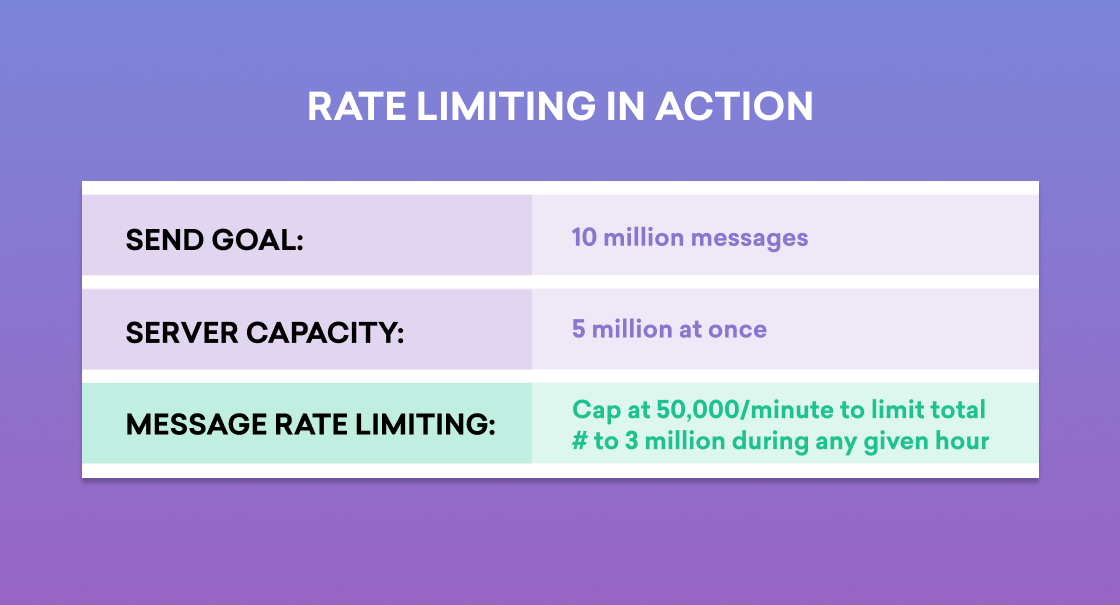
With customer engagement platforms like Braze, marketers can set a cap at exactly how many messages send per minute—whether that's 50, 500, 10K, 25K, 50K, 100K, 250K, or 500K notifications at a time. What level you select should be determined by your server capacity, and running stress tests or load tests ahead of key launches or high-traffic days—say Black Friday—can help you land on the right settings.
Rate Limiting vs. Frequency Capping
Rate limiting is often confused with another key marketing tool, frequency capping. While both can be used to improve customer experiences, they work in different ways. Here's a quick overview of each to highlight the purpose and use case for each:
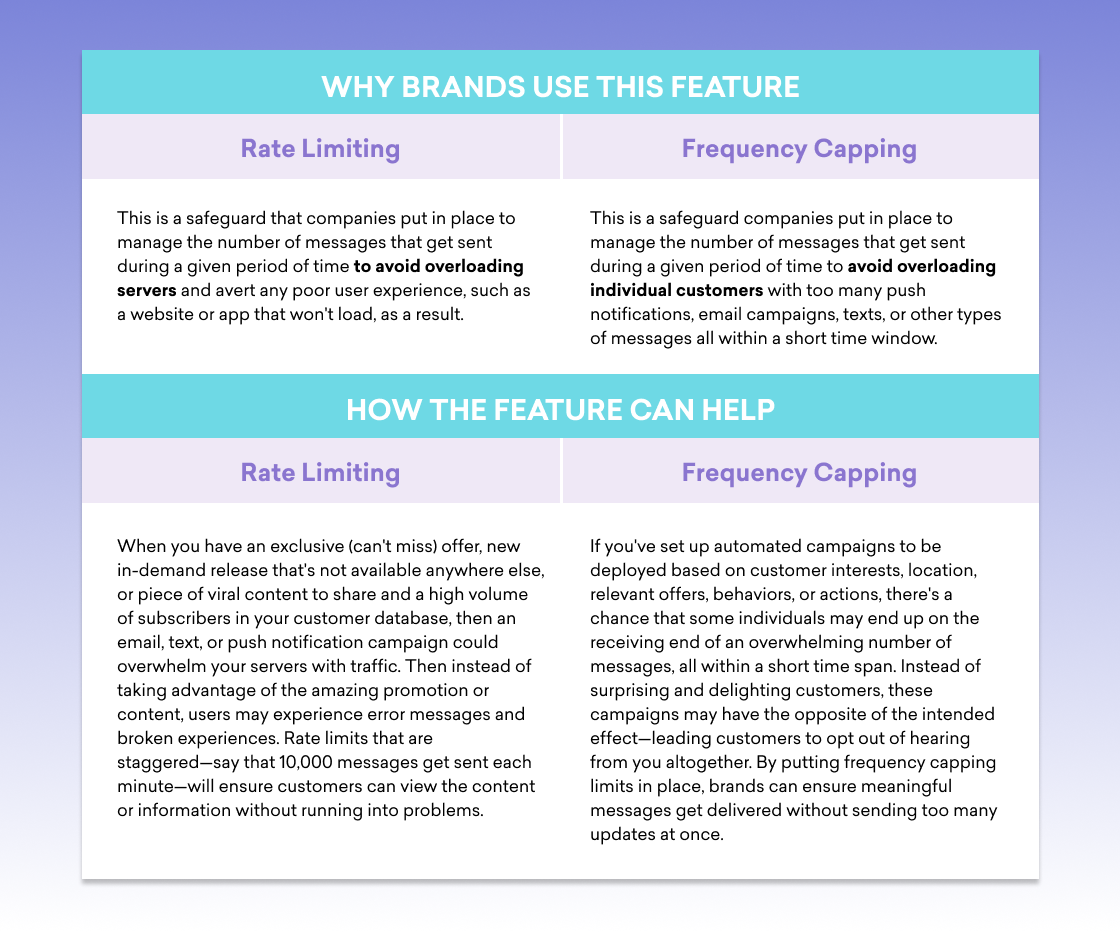
How Rate Limiting Supports Smarter Customer Engagement
Customer experience—and loyalty—is at stake when brand apps and websites crash. Especially during major, tentpole events like the Super Bowl, the Oscars, Black Friday, or election night. Or, for that matter, during major moments for your brand, like your hit show's series finale, the pre-sale for a must-attend event, opening week of a new celebrity restaurant, or your big annual sale.
Without rate limiting, sending appealing emails or push notifications is like giving candy to a kid—only to snatch the chance at enjoying the treat away. Brands that are looking to extend customer lifetime value and build relationships made to last should prioritize incorporating rate limiting into their messaging strategy to ensure avoiding an uptick in negative engagement KPIs, like unsubscribes, uninstalls, and opt-outs.
Next Steps
You get seven seconds to make a first impression. That's why for brands, onboarding is crucial to getting things right. Read our guide First Impressions: Why Your Brand Needs a Cross-Channel Onboarding Strategy to hit the six most critical milestones of welcoming and guiding new users through the onboarding process. Plus, get insights about what it takes to see a 9X improvement in customer engagement.
